Wikipedia defines "Jazz" as a musical art form which originated at the beginning of the 20th century in African American communities in the Southern United States from a confluence of African and European music traditions. The style's West African pedigree is evident in its use of blue notes, improvisation, polyrhythms, syncopation, and the swung note.

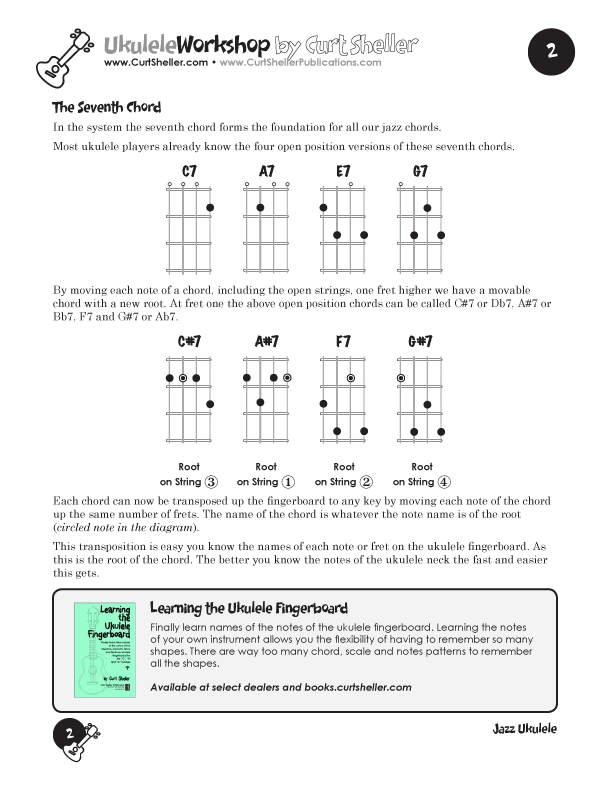
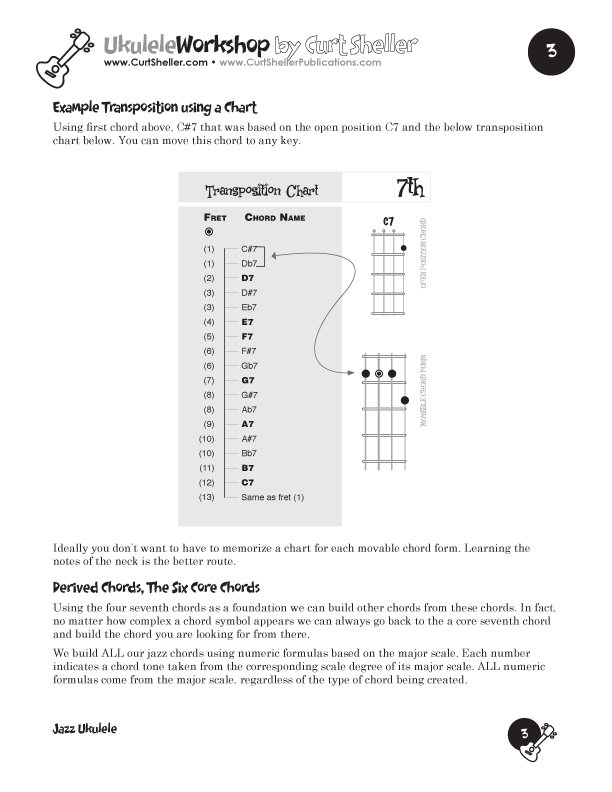
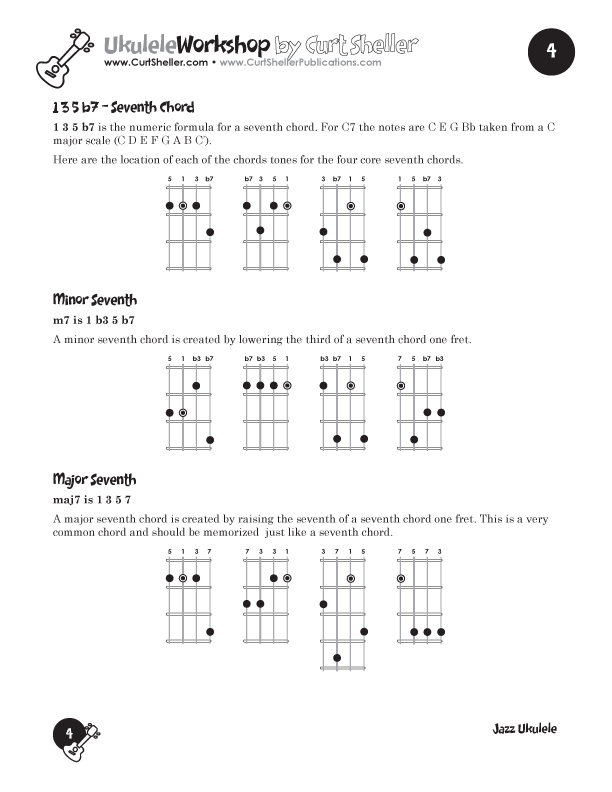
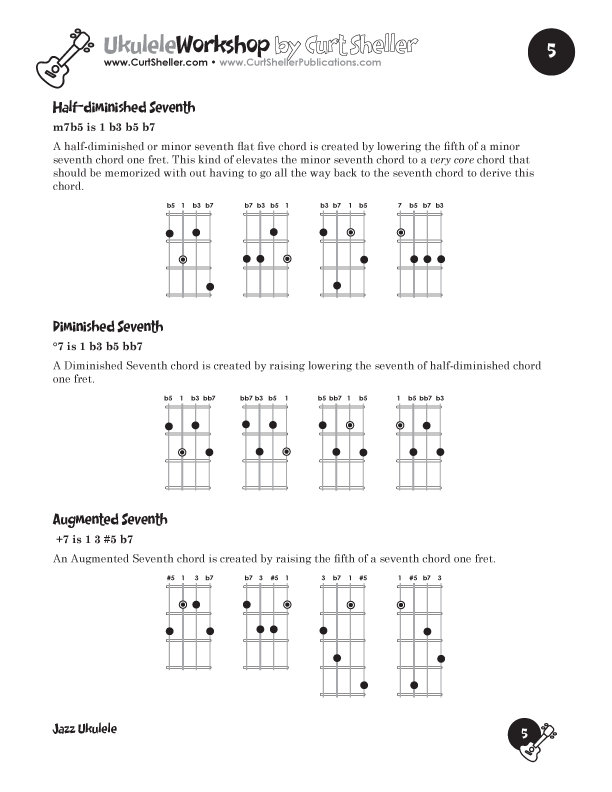
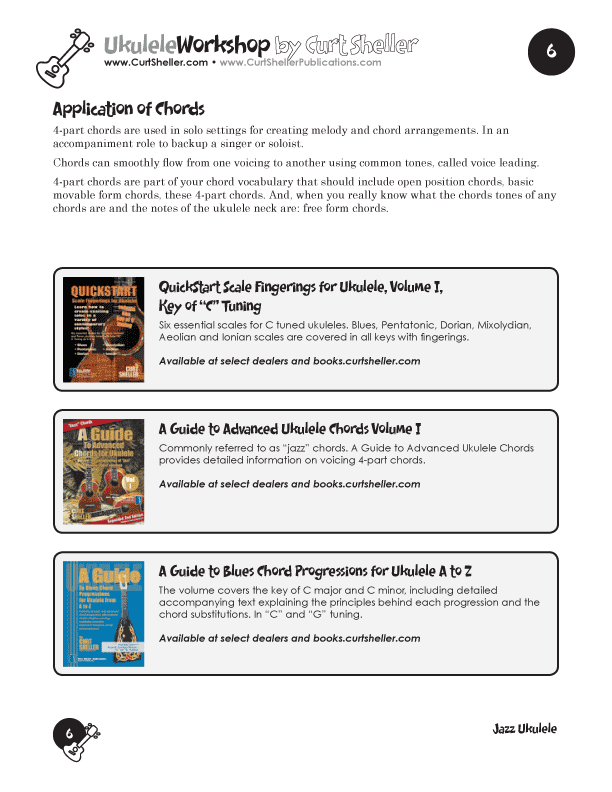
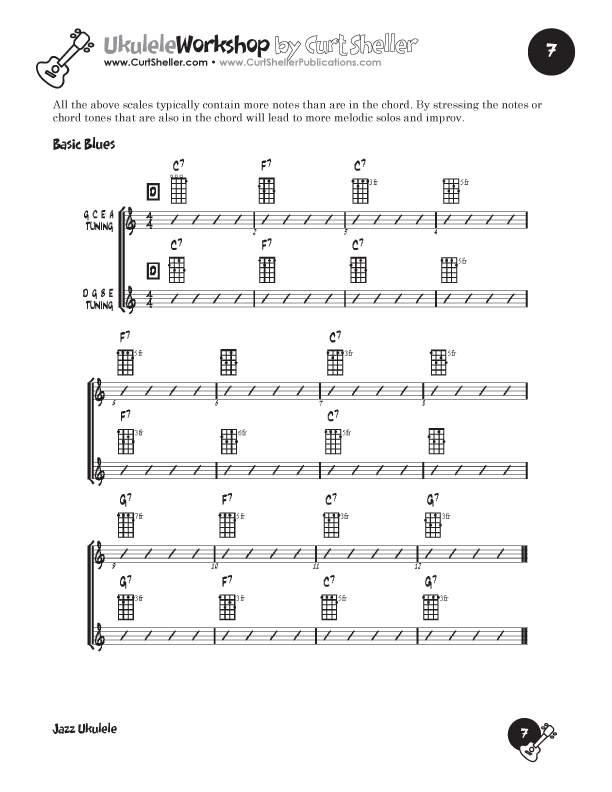
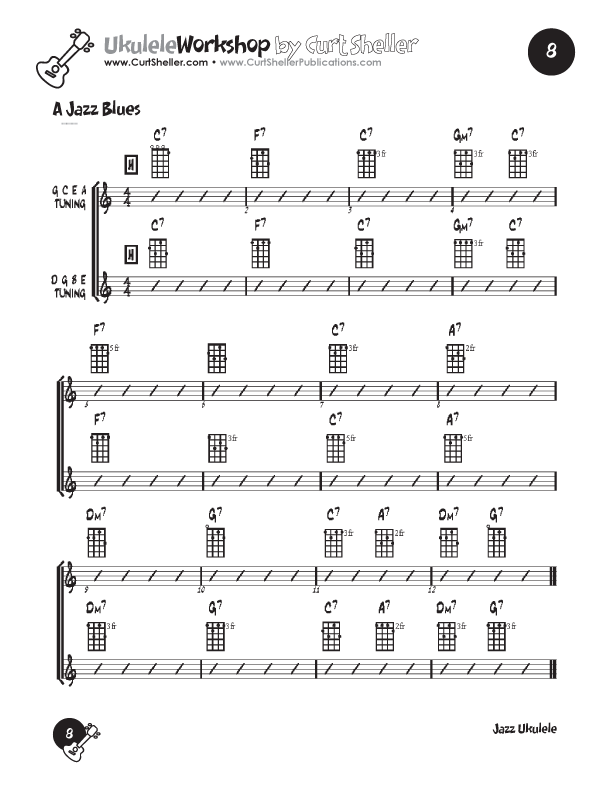
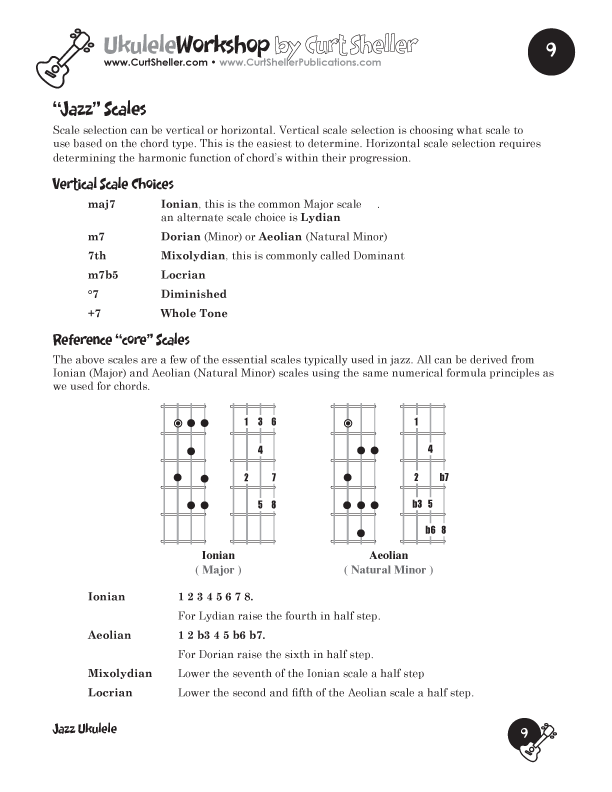
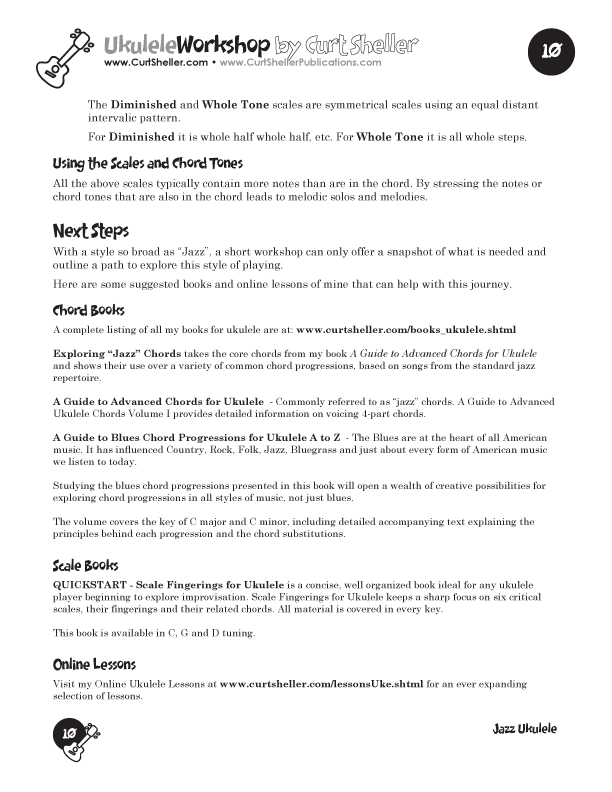
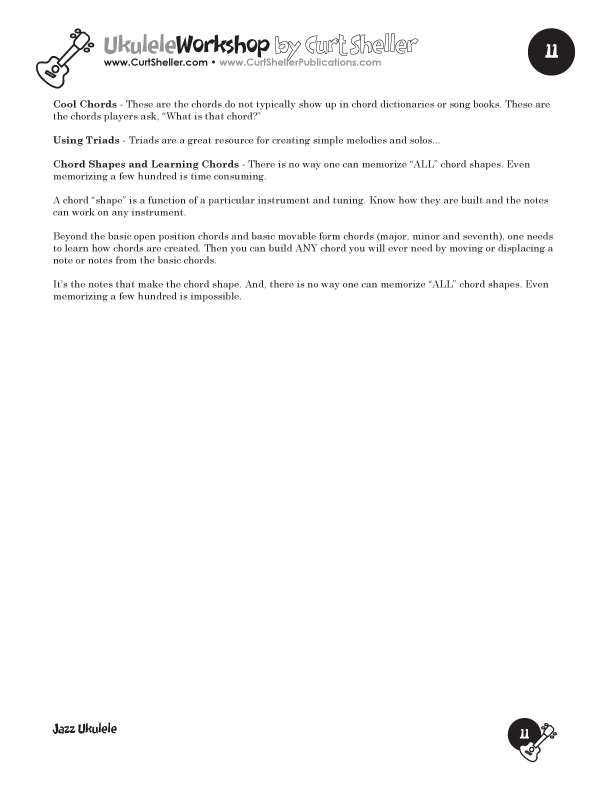
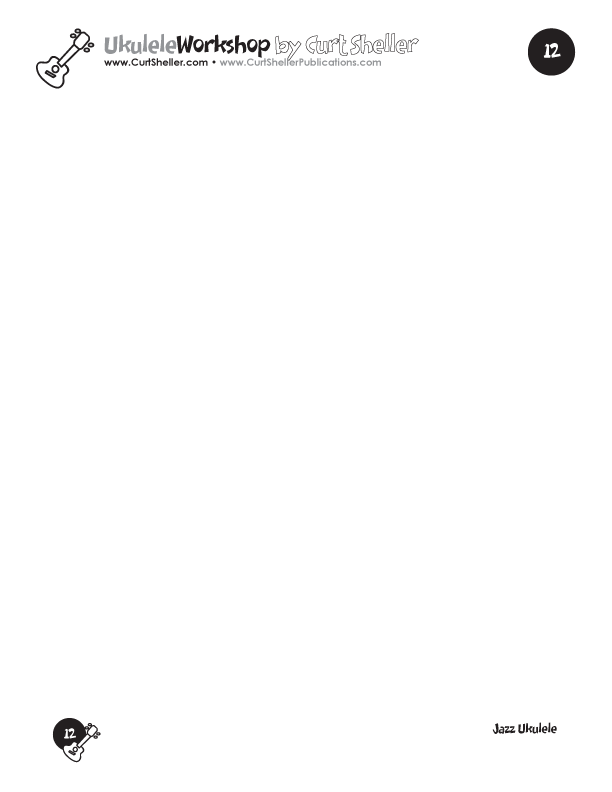












Wikipedia defines Jazz as a musical art form which originated at the beginning of the 20th century in African American communities in the Southern United States from a confluence of African and European music traditions. The style's West African pedigree is evident in its use of blue notes, improvisation, polyrhythms, syncopation, and the swung note.
At a minimum to explore jazz or contemporary music on a ukulele you need a core set of chords and scales. It's this foundation or core that you can build on.
This lesson contains links and resources for developing as a jazz ukulele player. And, a great overview of what is needed as far as chords, scales and the essential elements that are needed to explore jazz on a ukulele.
Available for Premium Site Access Plans Only
Necessary Jazz Skills
Technique
Technique is the physical control and coordination needed to play an instrument or sing. It is involves position, efficiency of motion and effort, as well as exercises to develop specific physical skills.
Theory
Theory is the body of principles behind music. It includes scales and chord building, intervals, progressions, resolution, harmony, motion, power, color, chord substitution, keys and time signatures, rhythm, melody, etc.
Ear Training
Ear Training is the development of the active and passive capacity to relate to music aurally. It includes the ability to regains melodic and harmonic intervals, chords, chord progression, rhythm, melody and harmony.
Reading
Reading is the ability to reproduce music from written notation. It includes five phases; note recognition / alternate note locations, rhythm recognition, fingering considerations, communication terminology and interpretation.
Repertoire
Repertoire includes the songs within the performance ability of the student. These songs maybe memorized or read. They may be literal reproductions or creative interpretations.
Improvisation
Improvisation is the ability to spontaneous to create melody over a predetermined chord progression. It involves scales, alternate fingerings, arpeggios, intervalic development, sequences, embellishments, superimposition, rhythm, motifs, development techniques and idiomatic considerations.
Musical Idioms
Musical Idioms is the study of music musical style it involves well developed categories as; Rock, Blues, Country, Jazz, Bluegrass, Classical, Folk, Urban and Fusion. It also includes subdivisions of specializations.
Songwriting
Songwriting is the creation of original music based on a single melodic line with a chord progression. Lyrics may or may not be included.
Arranging
Arranging involves the choice of instruments, tempo, rhythmic feel, form, intro, ending, interludes, solos, harmonies, and instrumental accompaniment of a song.
Composition
Composition is the creation of original music based on multiple simultaneous and compatible melodies. It historically involves the classical forms but frequently includes more sophisticated levels of contemporary music.
Orchestration
Orchestration involves the choice of instruments for a composition. This choice is based on the ranges and colors of the instruments which best represent the mood and creative intent of the composer.
Interpretation
Interpretation involves the ability to perform a song or composition in a unique and personal way. These skills involve a interrelated set of disciplines which include, theory, ear training, technique, dynamics, embellishments, phrasing, and rhythmic flexibility.
The Fingerboard
If there is one thing that really opens up the ukulele. It is really, and I mean really knowing the notes of the ukulele fingerboard. This needs to be second nature with no conscience thought.
This is separate from learning to read standard music notation. Which, is an essential skill to develop.
Jazz Chords
Regardless of the style of jazz that you venture into. You need a core foundation of chords and scales. Open position, movable form chords and just plain old knowing the notes of chords and scales.
Building a solid chord foundation is essential in your development as a musician and jazz musician - ANY instrument.
Jazz Scales
There are seventeen essential jazz scales.
From the major and natural minor scales you can build theses essential scales.
Wikipedia defines Jazz as a musical art form which originated at the beginning of the 20th century in African American communities in the Southern United States from a confluence of African and European music traditions. The style's West African pedigree is evident in its use of blue notes, improvisation, polyrhythms, syncopation, and the swung note.
At a minimum to explore jazz or contemporary music on a ukulele you need a core set of chords and scales. It's this foundation or core that you can build on.
This lesson contains links and resources for developing as a jazz ukulele player. And, a great overview of what is needed as far as chords, scales and the essential elements that are needed to explore jazz on a ukulele.
Available for Premium Site Access Plans Only
Necessary Jazz Skills
Technique
Technique is the physical control and coordination needed to play an instrument or sing. It is involves position, efficiency of motion and effort, as well as exercises to develop specific physical skills.
Theory
Theory is the body of principles behind music. It includes scales and chord building, intervals, progressions, resolution, harmony, motion, power, color, chord substitution, keys and time signatures, rhythm, melody, etc.
Ear Training
Ear Training is the development of the active and passive capacity to relate to music aurally. It includes the ability to regains melodic and harmonic intervals, chords, chord progression, rhythm, melody and harmony.
Reading
Reading is the ability to reproduce music from written notation. It includes five phases; note recognition / alternate note locations, rhythm recognition, fingering considerations, communication terminology and interpretation.
Repertoire
Repertoire includes the songs within the performance ability of the student. These songs maybe memorized or read. They may be literal reproductions or creative interpretations.
Improvisation
Improvisation is the ability to spontaneous to create melody over a predetermined chord progression. It involves scales, alternate fingerings, arpeggios, intervalic development, sequences, embellishments, superimposition, rhythm, motifs, development techniques and idiomatic considerations.
Musical Idioms
Musical Idioms is the study of music musical style it involves well developed categories as; Rock, Blues, Country, Jazz, Bluegrass, Classical, Folk, Urban and Fusion. It also includes subdivisions of specializations.
Songwriting
Songwriting is the creation of original music based on a single melodic line with a chord progression. Lyrics may or may not be included.
Arranging
Arranging involves the choice of instruments, tempo, rhythmic feel, form, intro, ending, interludes, solos, harmonies, and instrumental accompaniment of a song.
Composition
Composition is the creation of original music based on multiple simultaneous and compatible melodies. It historically involves the classical forms but frequently includes more sophisticated levels of contemporary music.
Orchestration
Orchestration involves the choice of instruments for a composition. This choice is based on the ranges and colors of the instruments which best represent the mood and creative intent of the composer.
Interpretation
Interpretation involves the ability to perform a song or composition in a unique and personal way. These skills involve a interrelated set of disciplines which include, theory, ear training, technique, dynamics, embellishments, phrasing, and rhythmic flexibility.
The Fingerboard
If there is one thing that really opens up the ukulele. It is really, and I mean really knowing the notes of the ukulele fingerboard. This needs to be second nature with no conscience thought.
This is separate from learning to read standard music notation. Which, is an essential skill to develop.
Jazz Chords
Regardless of the style of jazz that you venture into. You need a core foundation of chords and scales. Open position, movable form chords and just plain old knowing the notes of chords and scales.
Building a solid chord foundation is essential in your development as a musician and jazz musician - ANY instrument.
Jazz Scales
There are seventeen essential jazz scales.
From the major and natural minor scales you can build theses essential scales.
Related Lessons, Videos, Lesson Series, Songs, Books & Reference Charts, Resources & Assets, Workshops are below.
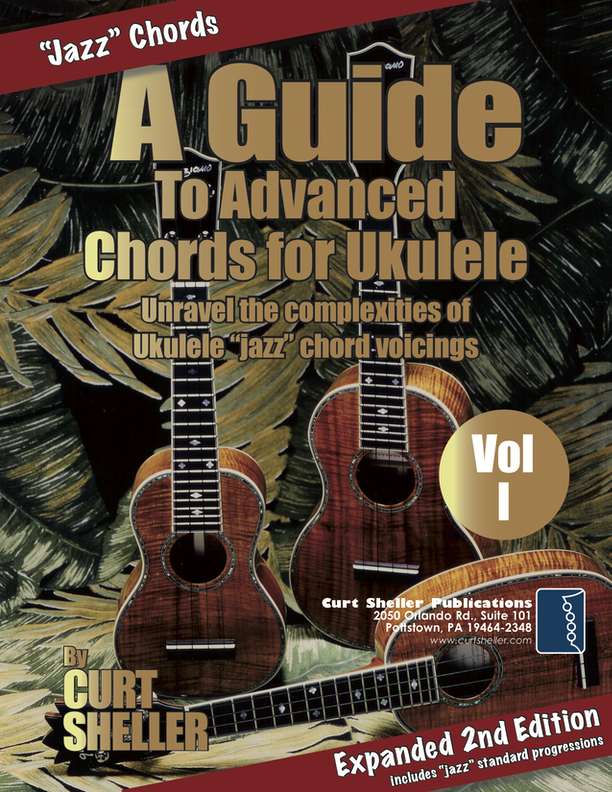
Beyond learning basic Ukulele chords, most players struggle with advanced chords. Commonly called "jazz" chords, these more sophisticated voicings find a wide use in all forms of music. A Guide to Advanced Chords for Ukulele - presents a highly organized and efficient approach to the mysterious subject of advanced chords. Chord dictionaries are not the answer.
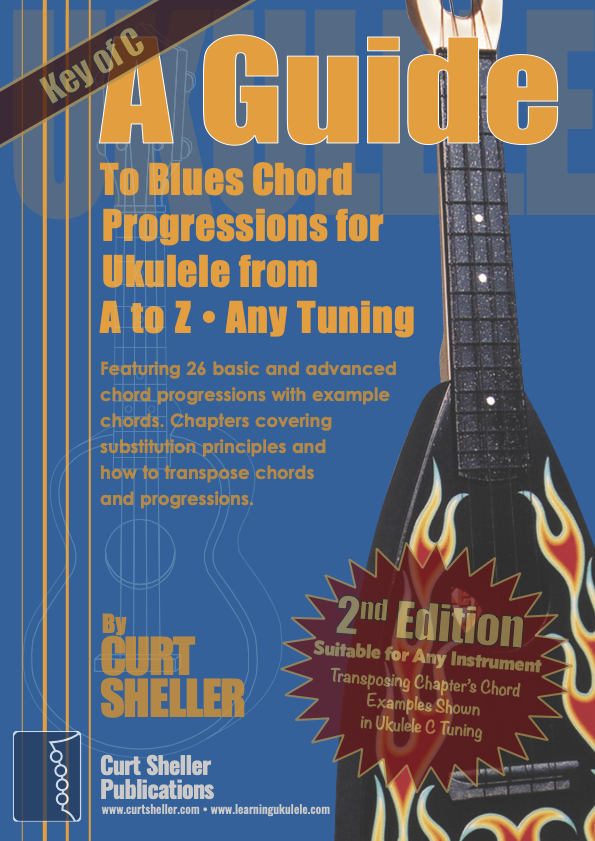
The Blues are at the heart of all American music. It has influenced Country, Rock, Folk, Jazz, Bluegrass and just about every form of American music we listen to today. 26 blues progression in C and G tuning, progressing from basic to advanced jazz progression, with chord grids and substitutions explained.
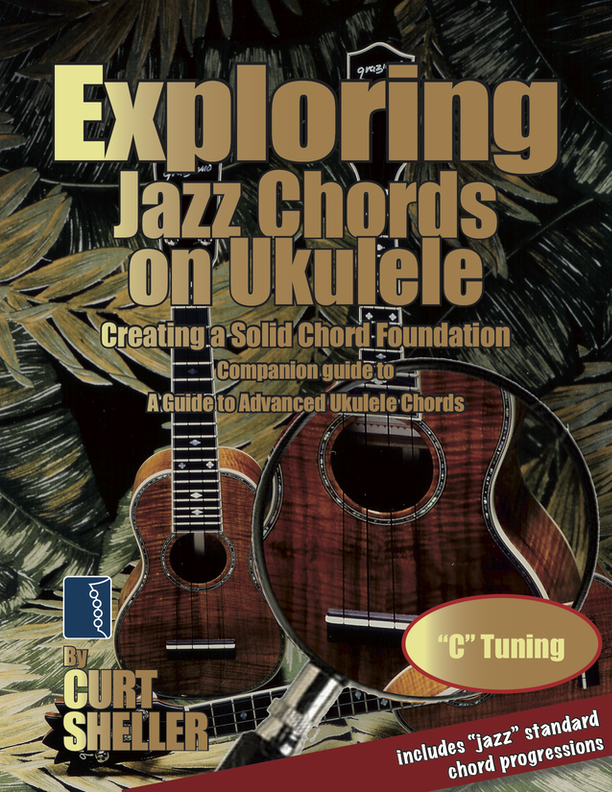
Exploring jazz chords using a variety of common chord progressions based on songs from the standard jazz repertoire. Core Chords are the basic set of chords needed to play a wide range of music, in a variety of styles. This set of chords includes basic open position chords, basic movable form chords and the core 4-part "jazz" chords.
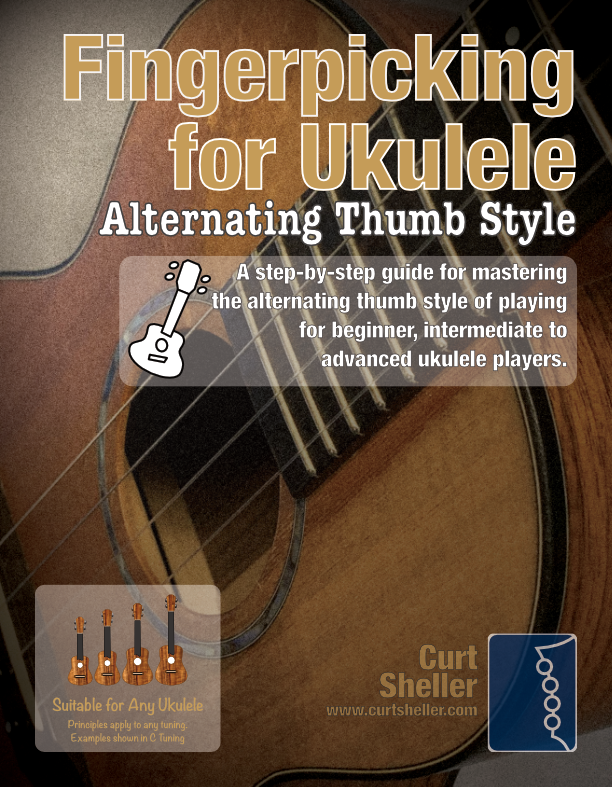
Fingerpicking for Ukulele - Alternating Thumb Style, 2nd Edition is a new expanded edition that focuses on the alternating thumb fingerpicking style through a series of graduated lessons-chapters incorporating your index and middle fingers with the alternating thumb.

Daily Practice Material for the Contemporary Ukulele Player is an organized collection of daily practice and reference material for the contemporary ukulele player. This material can be used to develop the vocabulary and knowledge necessary for single note playing.

Harmonic Analysis is the understanding of the functional sequence of chords. It is the process used to analyze the harmonic structure of a progression, song or composition. This analysis is then used to make scale selections for improvisation and chord substitution.

Finally, learn the names of the notes of the fingerboard. Learning the notes of your instrument allows you the flexibility of not having to remember so many shapes. There are simply way too many chords, scale and notes patterns, and shapes to remember. It all comes down the notes.

Learn the six fingering principles to navigating the ukulele fingerboard. Fingering is one of the most universal topics. Whether your style is Rock, Blues, Country, Jazz or Classical, these principles will improve your technique, your solos, even your sight reading. Think of fingering as a series of pathways. When you learn to connect these pathways, there are benefits not only to technique but also to creativity.

Finally, learn the names of the notes of the ukulele fingerboard in C tuning .

Learn the six fingering principles to navigating the ukulele fingerboard. Fingering is one of the most universal topics. Book: Six Secrets of the Ukulele Fingering

Harmonic Analysis is the understanding of the functional sequence of chords. It is the process used to analyze the harmonic structure of a progression, song or composition. Book: Harmonic Analysis for Scale Selection and Chord Substitution

Learn to read single note melodies in the first/open position is a lot easier than you might think. Book: Ukulele – Reading Music Series – Primer

An organized collection of daily practice and reference material for the contemporary ukulele player for developing the vocabulary and knowledge necessary for single note playing. Book: Daily Practice Material for the Contemporary Ukulele
Checkout the Books & Reference Charts for additional Handy, Dandy Reference Charts.

Ukulele Fingerboard Chart for C Tuning, Low or High G – G C E A

Ukulele Fingerboard Chart for G Tuning, Low or High A – D G B E

A handy reference chart of all 15 major and relative minor key signatures. US Letter 8.5 x 11 sized (ANSI-A), A4
Checkout the Books & Reference Charts for additional Handy, Dandy Reference Charts.




.jpg)